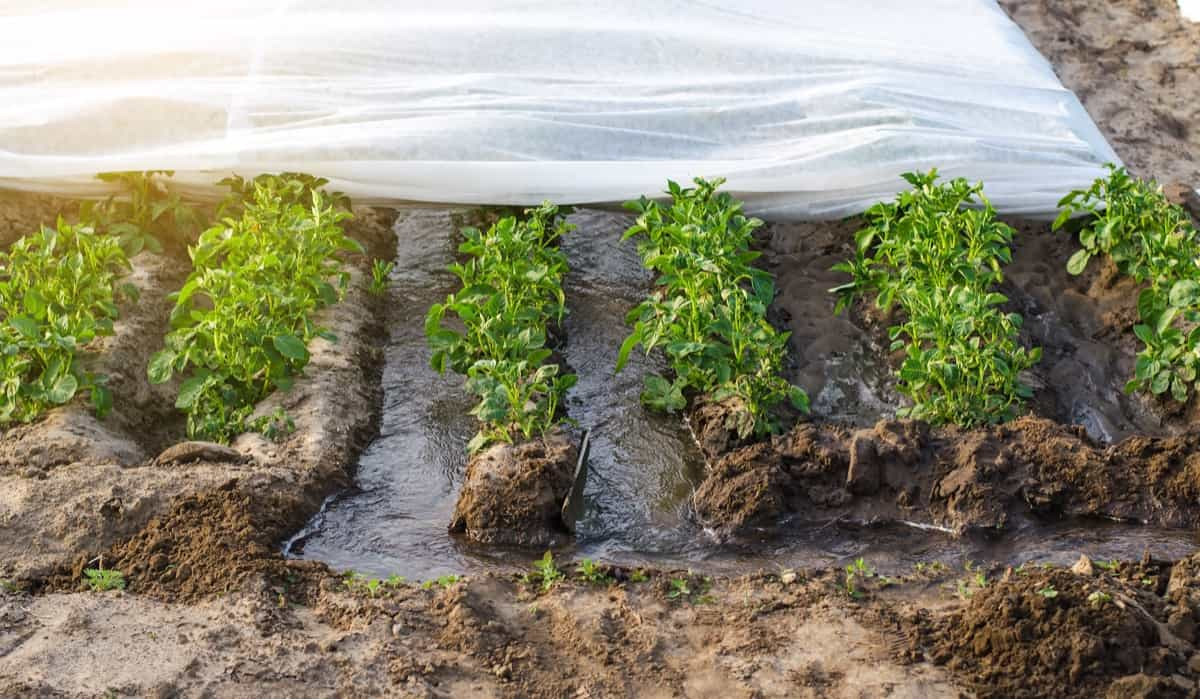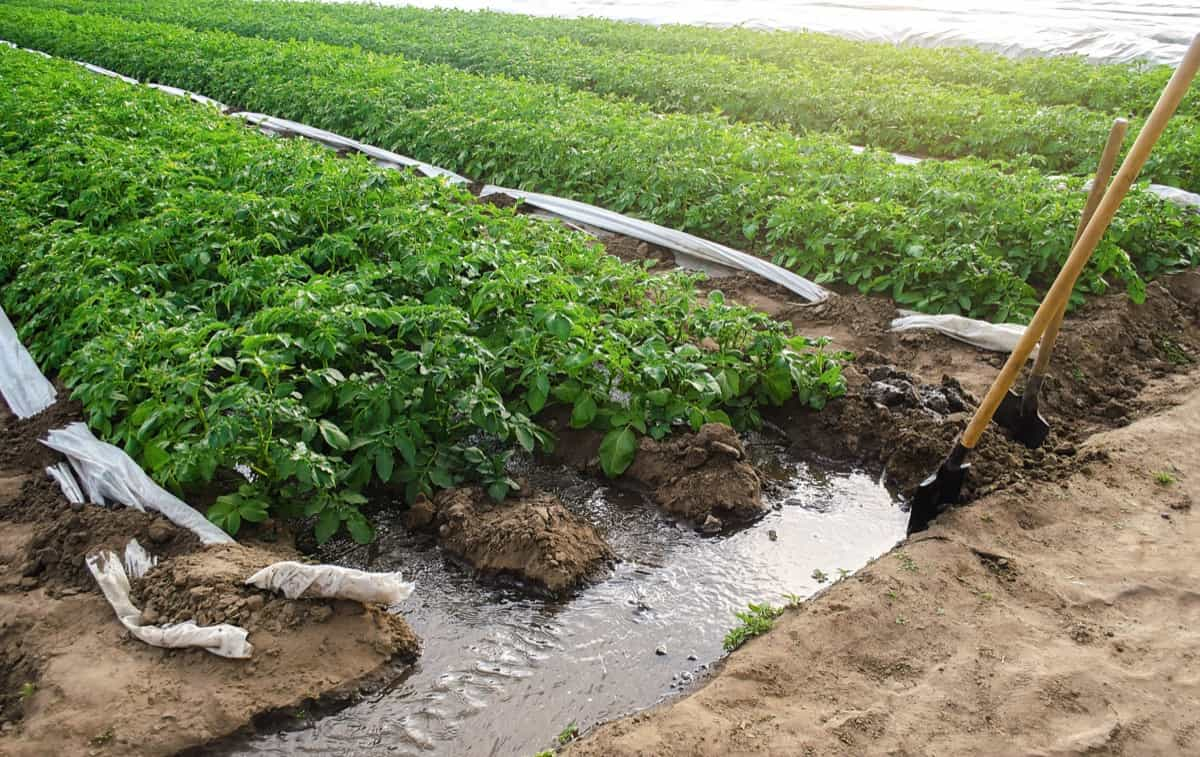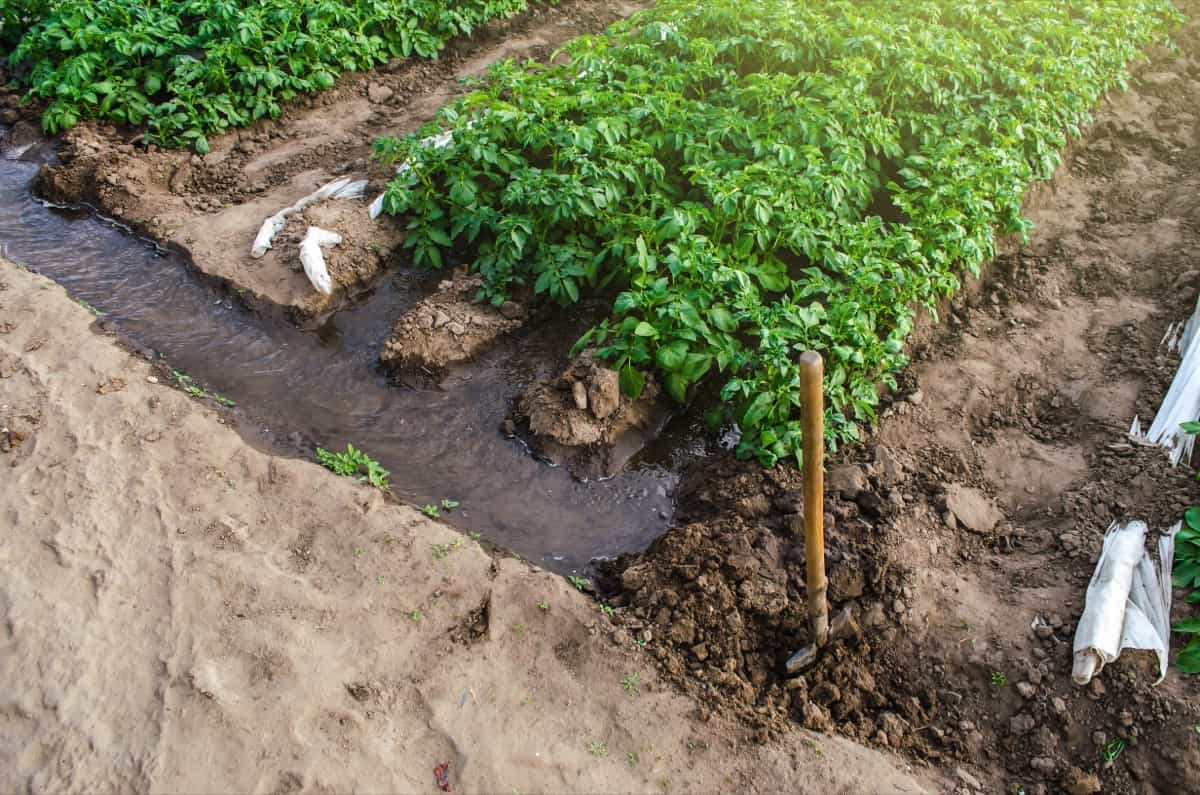Furrow irrigation is an agricultural technique used to distribute water to crops efficiently. This method creates furrows or shallow trenches along the field, allowing water to flow through them and reach the plant roots. Pros include reduced water wastage due to targeted delivery, suitability for row crops, and low initial investment. However, the cons involve potential soil erosion, uneven water distribution, and labor-intensive setup. A comprehensive understanding of furrow irrigation’s benefits and drawbacks is crucial for sustainable agricultural practices.

How Does Furrow Irrigation Work
Introduction to Furrow Irrigation: A Comprehensive Overview
Furrow irrigation, a surface irrigation method, entails the excavation of trenches in agricultural fields to facilitate water movement. Primarily reliant on gravity, this approach permits water to flow through the furrows, ensuring horizontal and vertical seepage. The result is optimal moisture retention within the soil reservoir, which is essential for plant growth. Notably, this technique offers flexibility, allowing individual furrows to be managed for precise outcomes or providing uniform irrigation across the entire field.
The Mechanics of Furrow Irrigation: Step-by-Step Process Explained
Furrow irrigation, also known as ridged-furrow irrigation, operates on the principle of gravity-driven water flow. In this method, water courses down sloping channels formed by ridges and furrows between elevated crop rows. Ideal for relatively level terrains that can be graded to optimize water movement, furrow systems are not recommended for rolling landscapes or steep inclines due to potential water runoff challenges.
The technique’s effectiveness hinges on the elevation of crops along ridges, which confines water within the designated channels, preventing contact with plant stems and leaves. This confinement significantly reduces the risk of rot or disease development. Row crops such as corn, sunflower, sugarcane, soybean, and fruit trees like citrus and grapes thrive under furrow irrigation. Additionally, crops vulnerable to damage from standing water—like tomatoes, vegetables, potatoes, and beans—benefit from this method.
Furrow irrigation follows a systematic process. Water is introduced at the field’s highest point, allowing it to flow naturally through the furrows via gravity. Adequate spacing between furrows ensures even water distribution. Farmers can tailor the volume and rate of water application, as each furrow can be individually managed. However, careful planning is essential to prevent uneven moisture distribution and soil erosion.
Advantages of Furrow Irrigation: Benefits for Crop Production
- Furrow irrigation is a cost-effective method for farmers to flood their fields with moisture for a successful season. This system uses gravity to distribute water, reducing the overall cost of deployment compared to other systems.
- Each trench can be controlled manually, but automated equipment is also available. Furrows also encourage more effective photosynthesis, as plants can achieve higher levels of photosynthesis due to fewer blockages in place.
- Weather conditions do not limit furrow irrigation, as it ensures each row receives the necessary water. Unlike spraying water onto a field during windy days, furrow irrigation does not guarantee where the moisture will land.
- Additionally, furrow irrigation has lower energy costs, as it can be manually produced after installation, reducing the energy needed to provide coverage for a farmer’s property compared to other systems.
- Overall, furrow irrigation is a cost-effective and efficient method for farmers to ensure their crops receive the necessary moisture for a successful season.
In case you missed it: Irrigation Pumps in Agriculture: Types and Cost Analysis

Disadvantages of Furrow Irrigation: Limitations and Challenges
Standing Water Concerns: Standing water can accumulate when gravity doesn’t facilitate complete water movement along the trench. Excess moisture can hinder root respiration and promote mold, algae growth, and heightened insect activity. These factors collectively risk crop health and productivity.
Field Structure Requirements: Successful furrow irrigation hinges on the field’s slope. While artificial water descent can be engineered, this process is time-consuming and costly in certain regions. An inadequate downward slope might result in crop system failure at the far end of each row.
Soil Erosion Risk: Frequent water movement can trigger soil erosion around the trenches, affecting nutrient distribution and potentially leading to uneven yields. Although moisture benefits root health, it doesn’t always translate to increased crop production.
Water Loss Challenges: Evaporation leads to moisture loss in furrow irrigation, impacting overall efficiency. Additionally, percolation can further reduce water capacity. This issue is exacerbated in regions with saline-rich water, potentially causing soil salt buildup that impairs productivity over time.
Factors Affecting Furrow Irrigation Efficiency: Understanding the Variables
- Soil Type: Soil’s ability to absorb water affects distribution within furrows.
- Field Slope: Proper slope ensures uniform water flow along furrows.
- Furrow Shape and Size: Design impacts water movement and coverage.
- Water Inlet Location: Placement affects even water distribution.
- Flow Rate and Duration: Managing water volume and timing optimizes irrigation.
- Wind and Weather Conditions: Wind can disrupt water distribution.
- Crop Type: Water needs vary; matching irrigation to crops is crucial.
- Management Practices: Regular maintenance and monitoring enhance efficiency.
Water Management in Furrow Irrigation: Strategies for Optimal Usage
Efficient water management is crucial in furrow irrigation, including timing, scheduling, soil moisture monitoring, runoff reduction, proper furrow preparation, mulching, tailwater recovery, and technology integration. Irrigation should be done during cooler periods to minimize evaporation, and irrigation intervals should be consistent. Regular soil moisture assessments help avoid overwatering. Proper furrow shape and size ensure uniform water distribution, while mulching retains soil moisture.
Environmental Impacts of Furrow Irrigation: Assessing the Consequences
In case you missed it: A Comparative Cost Analysis of Drip Irrigation Per Acre

Furrow irrigation has significant environmental impacts, including soil erosion, water waste, nutrient leaching, water contamination, energy consumption from pumps and equipment, and biodiversity impact. It can lead to soil degradation, water loss, contamination of water bodies with pesticides and fertilizers, and altered water distribution, affecting local ecosystems.
Comparing Furrow Irrigation with Other Irrigation Methods: Pros and Cons
Furrow irrigation offers cost-effective benefits like gravity flow and enhanced photosynthesis but poses standing water risk, soil erosion, and water loss. Drip irrigation, on the other hand, offers precise water delivery and reduced weed growth but also has higher initial costs, clogging potential, complex maintenance, and energy consumption.
Enhancing Furrow Irrigation Efficiency: Innovative Techniques and Technologies
Efficient Row Design: Tailoring slope to soil type optimizes water flow. Sandy soil benefits from steeper slopes, while clayey soil requires gentler inclines for even water distribution. Deeper, narrower furrows in sandy soil and wider, shallower furrows in clay soil ensure optimal water absorption and minimal runoff.
Runoff Reduction: Redirecting and reusing runoff mitigates water quality issues. Collecting runoff in pools for reuse can reduce water usage by up to 25%. Blocking or diking the lower furrow ends prevents runoff, but careful consideration is needed to avoid uneven distribution and nutrient leaching.
Tillage Reduction: Limiting or eliminating tillage benefits water conservation and crop yields. Maintaining ground cover crops slows water flow, increasing infiltration rates by 50% and reducing runoff by 93%.
Surge Flow Irrigation: Alternating water flow promotes uniform distribution, like one-hour on and off. As furrows dry, consolidated soil facilitates even water spread. Surge flow can lower water usage by up to 51%, enhancing efficiency and minimizing wastage.
In case you missed it: Cost Analysis of Sprinkler Irrigation Per Acre: A Comprehensive Study

Conclusion
Furrow irrigation’s reliance on gravity for water distribution offers cost-effectiveness and enhanced photosynthesis. However, challenges like standing water, field structure requirements, and potential environmental impacts must be carefully managed for optimal results and sustainable agricultural practices.
- Feed Your Flock for Less: Top 10 Tips to Save on Chicken Feed
- Ultimate Guide to Ossabaw Island Hog: Breeding, Raising, Diet, and Care
- Hatching Answers: The Top 10 Reasons Your Chickens Aren’t Laying Eggs
- Eggs and Economics: Breaking Down the Cost of Raising Backyard Chickens
- Defend Your Greens: Proven Methods to Keep Iguanas Out of Your Garden
- Ultimate Guide to Cinnamon Queen Chicken: A Comprehensive Guide for Beginners
- Ultimate Guide to California Tan Chicken: Breeding, Raising, Diet, Egg-Production and Care
- Ultimate Guide to Marsh Daisy Chicken: Breeding, Raising, Diet, and Care
- 10 Types of Chicken Farming Businesses You Can Start for Profits